The larger-than-life-size sculpture of a cobbler’s last and the world-famous collection of footwear in the County Museum are powerful reminders of the trade which dominated Northampton for centuries. A guild of cordwainers (shoemakers) was well established in the town by the 16th century. By the 19th century, one-third of the workforce was engaged in the trade.
Text about the history of The Cordwainer.
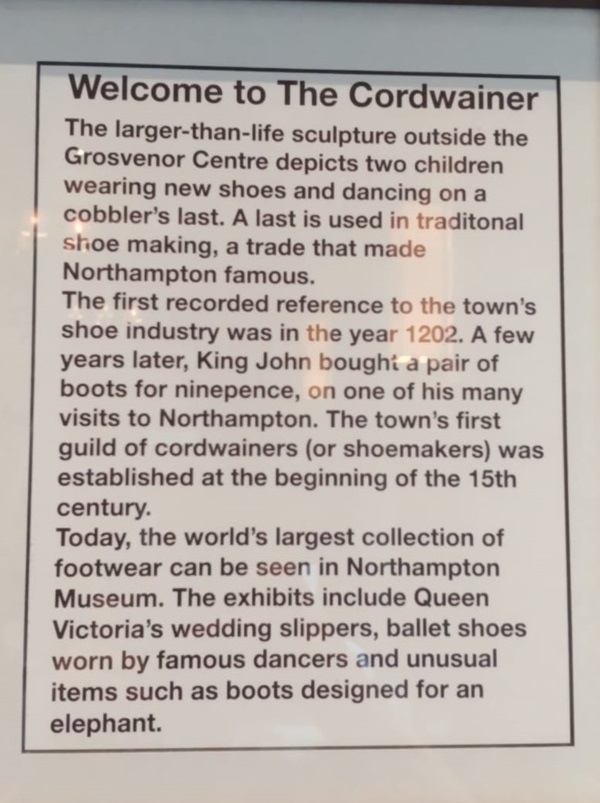
The text reads: The larger-than-life sculpture outside the Grosvenor Centre depicts two children wearing new shoes and dancing on a cobbler’s last. A last is used in traditional shoe making, a trade that made Northampton famous.
The first recorded reference to the town’s shoe industry was in the year 1202. A few years later, King John bought a pair of boots for 9p, on one of his many visits to Northampton. The town’s first guild of cordwainers (or shoemakers) was established at the beginning of the 15th century.
Today, the world’s largest collection of footwear can be seen in Northampton Museum. The exhibits include Queen Victoria’s wedding slippers, ballet shoes worn by famous dancers and unusual items such as boots designed for an elephant.
A print and text about Godwin and the Guildhall.
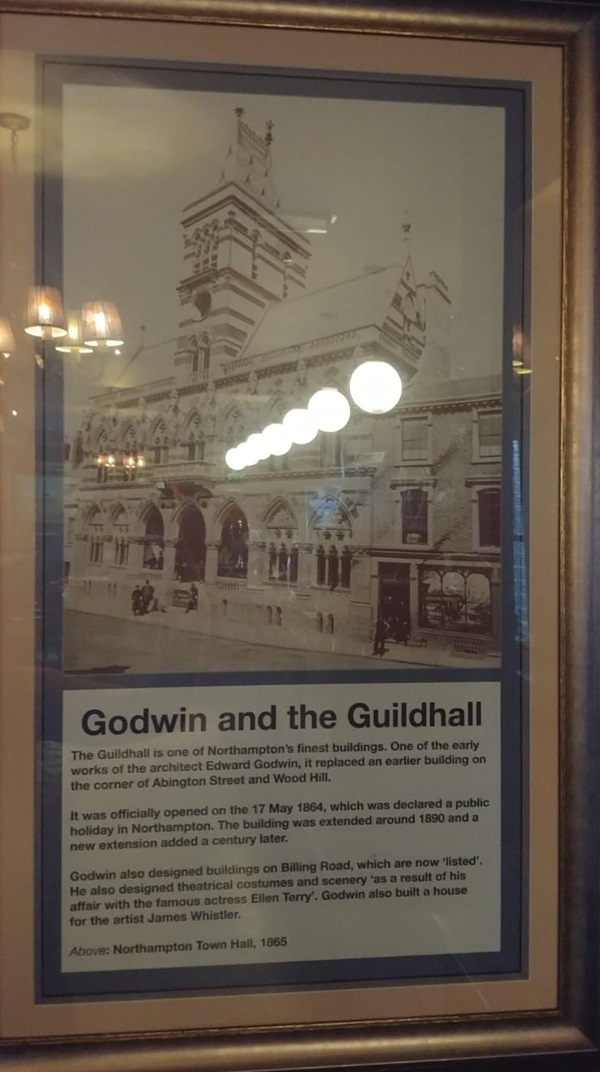
The text reads: The Guildhall is one of Northampton’s finest buildings. One of the early works of the architect Edward Godwin, it replaced an earlier building on the corner of Abington Street and Wood Hill.
It was officially opened on the 17 May 1864, which was declared a public holiday in Northampton. The building was extended around 1890 and a new extension added a century later.
Godwin also designed buildings on Billing Road, which are now listed. He also designed theatrical costumes and scenery ‘as a result of his affair with the famous actress Ellen Terry’. Godwin also built a house for the artist James Whistler.
Above: Northampton Town Hall, 1865.
Illustrations and text about the Civil War.
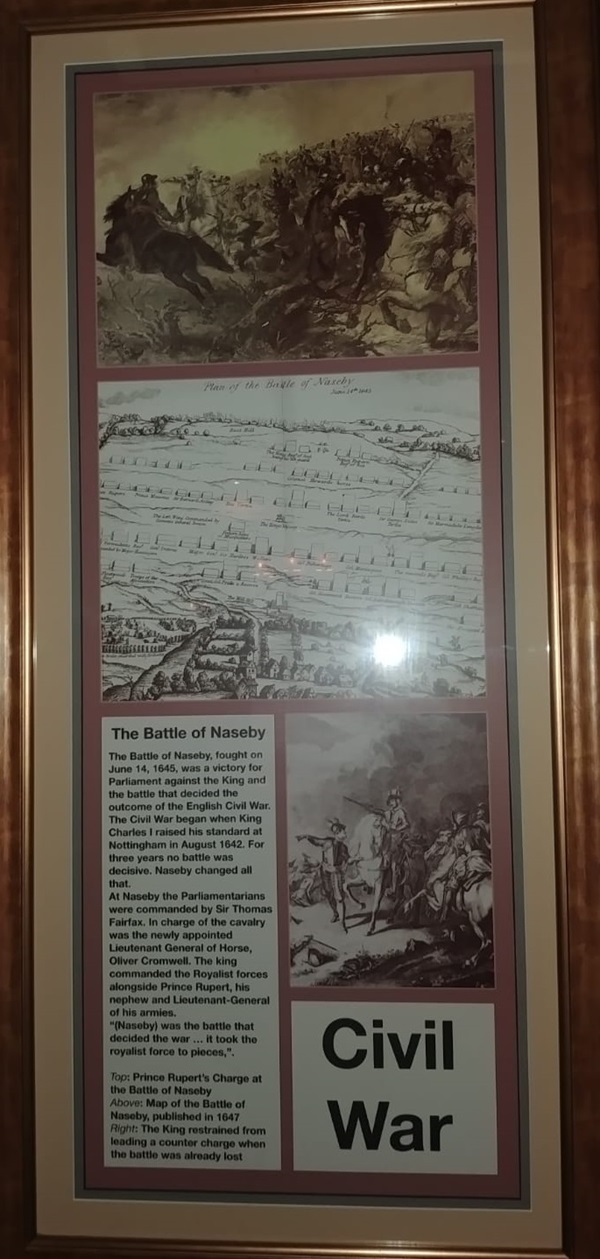
The text reads: The Battle of Naseby, fought on June 14, 1645, was a victory for Parliament against the King and the battle that decided the outcome of the English Civil War. The Civil War began when King Charles I raised his standard at Nottingham in August 1642. For three years no battle was decisive. Naseby changed all that.
At Naseby the Parliamentarians were commanded by Sir Thomas Fairfax. In charge of the cavalry was the newly appointed Lieutenant General of Horse, Oliver Cromwell. The king commanded the Royalist forces alongside Prince Rupert, his nephew and Lieutenant-General of his armies.
“(Naseby) was the battle that decided the war… it took the royalist force to pieces.”
Top: Prince Rupert’s Charge at the Battle of Naseby
Above: Map of the Battle of Naseby, published in 1647
Right: The King restrained from leading a counter charge when the battle was already lost.
Photographs and text about Northampton Castle.
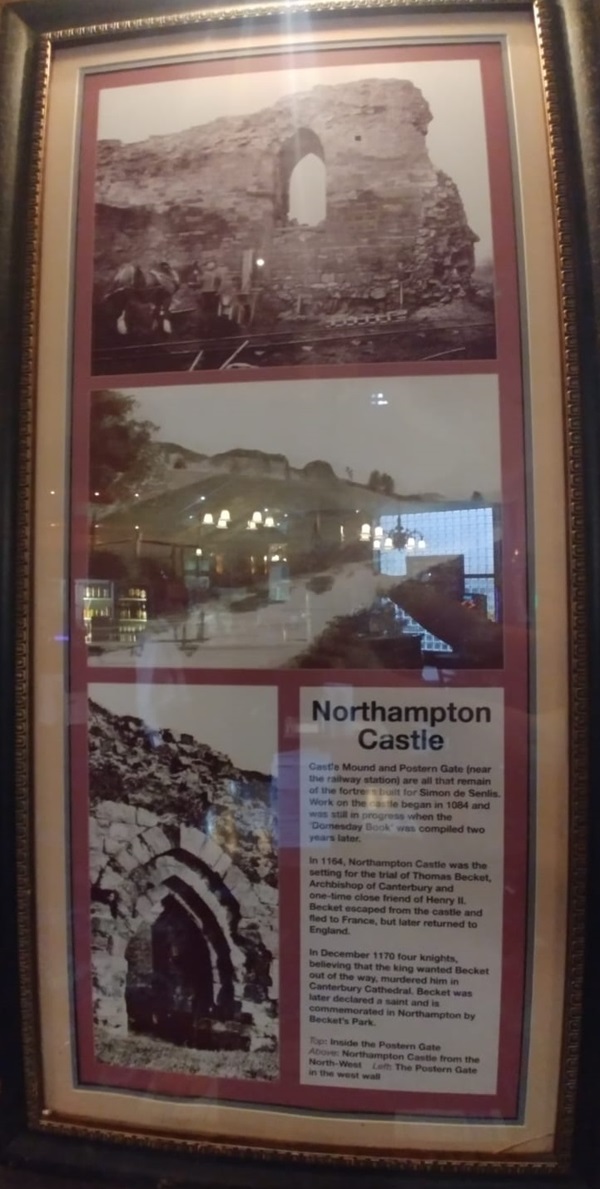
The text reads: Castle Mound and Postern Gate (near the railway station) are all that remain of the fortress built for Simon de Senlis. Work on the castle began in 1084 and was still in progress, when the Domesday Book was compiled two years later.
In 1164, Northampton Castle was the setting for the trial of Thomas Becket, Archbishop of Canterbury and one-time close friend of Henry II. Becket escaped from the castle and fled to France, but later returned to England.
In December 1170 four knights, believing that the king wanted Becket out of the way, murdered him in Canterbury Cathedral. Becket was later declared a saint and is commemorated in Northampton by Becket’s Park.
Top: Inside the Postern Gate
Above: Northampton Castle from the North-West
Left: The Postern Gate in the west wall.
Photographs and text about Joseph Grose - automobile pioneer.
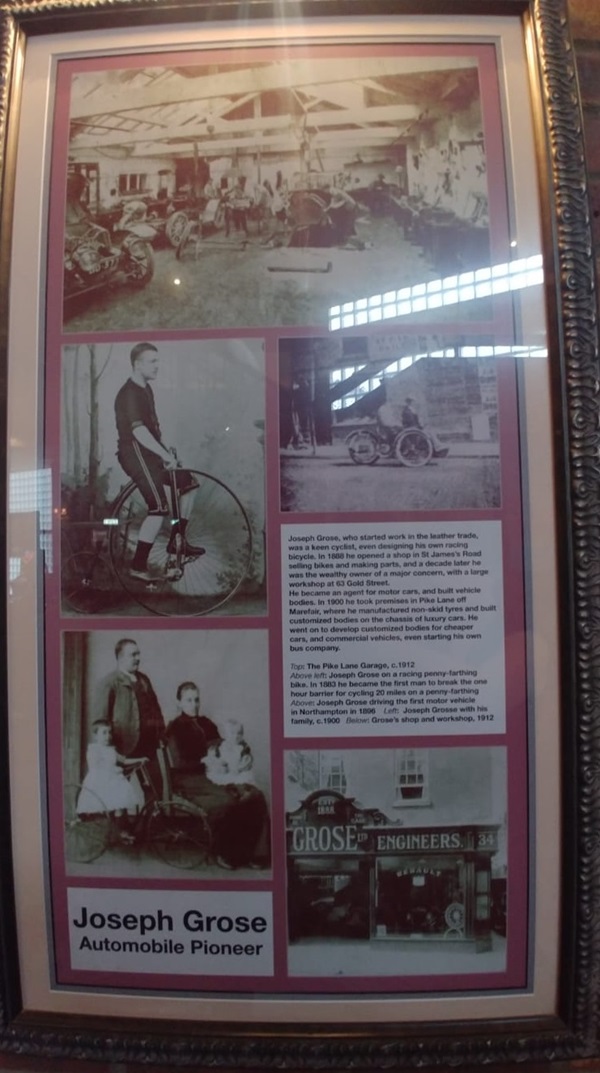
The text reads: Joseph Grose, who started work in the leather trade, was a keen cyclist, even designing his own racing bicycle. In 1868 he opened a shop in St James’s Road selling bikes and making parts, and a decade later he was the wealthy owner of a major concern, with a large workshop at 63 Gold Street.
He became an agent for motor cars, and built vehicle bodies. In 1900 he took premises in Pike Lane off Marefair, where he manufactured non-skid tyres and built customized bodies on the chassis of luxury cars. He went on to develop customized bodies for cheaper cars, and commercial vehicles, even starting his own bus company.
Top: The Pike Lane Garage, c1912
Above left: Joseph Grose on a racing penny-farthing bike. In 1883 he became the first man to break the one hour barrier for cycling 20 miles on a penny-farthing.
Above: Joseph Grose driving the first motor vehicle in Northampton in 1806.
Left: Joseph Grose with his family, c1900.
Below: Grose’s shop and workshop, 1912.
Photographs of The Drapery.
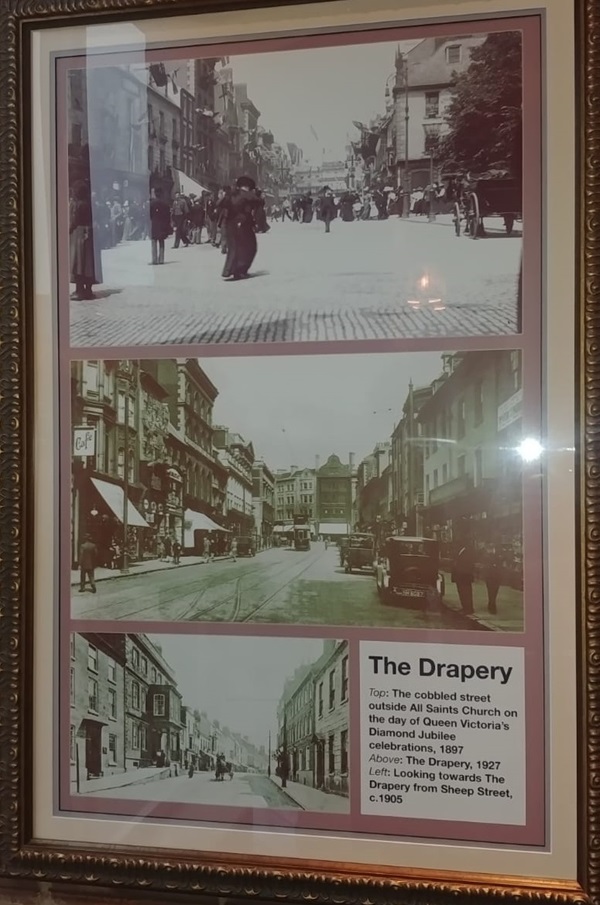
Top: The cobbled street outside All Saints Church on the day of Queen Victoria’s Diamond Jubilee celebrations, 1897
Above: The Drapery, 1927
Left: Looking towards The Drapery from Sheep Street, c1905.
An illustration of machine-closing in Northampton, 1869.
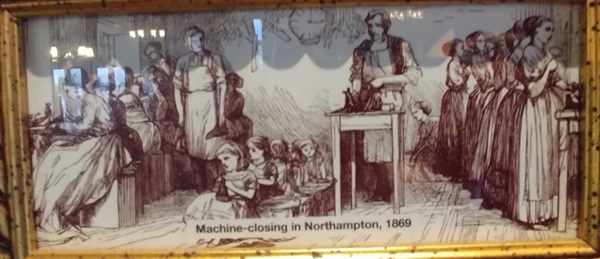
A photograph of an International Shoe and Leather Fair in the 1920s.
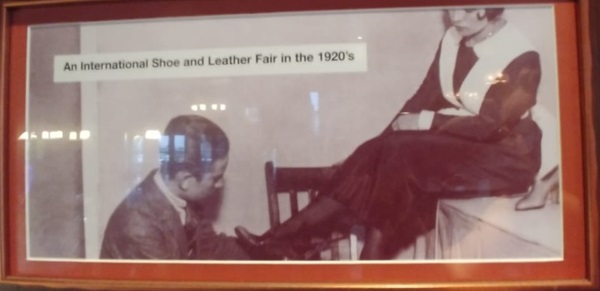
An illustration of a workshop of a Northampton shoemaker, c1865.
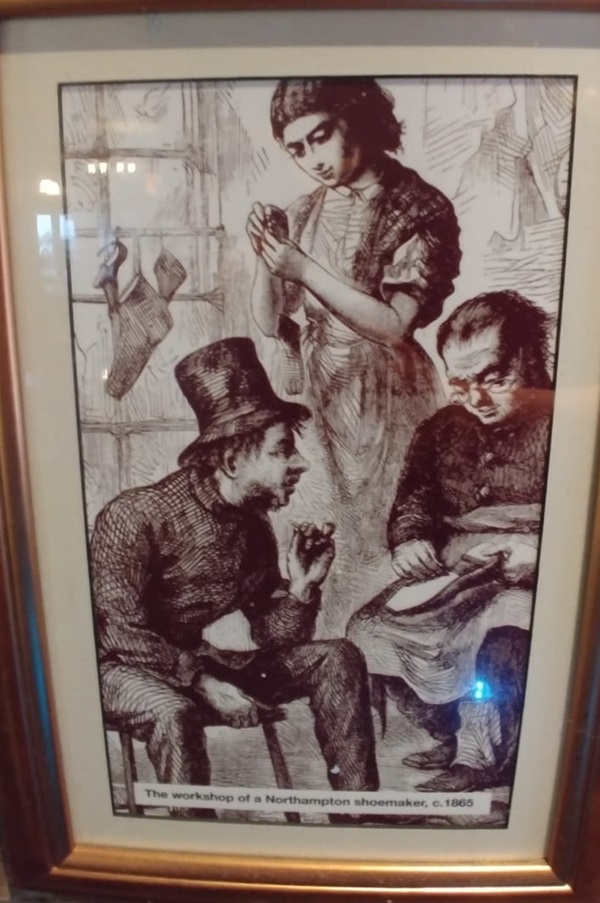
A photograph of the first Leather Trades Exhibition, held in Northampton in 1873.
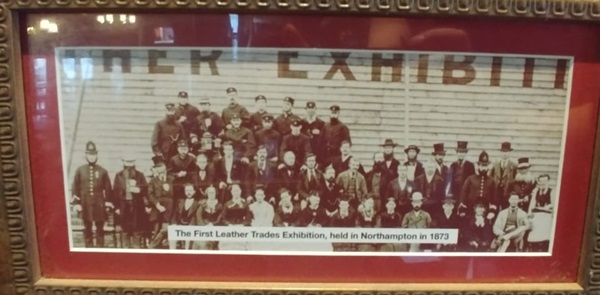
An illustration of a shoemaker’s workshop, c1660.
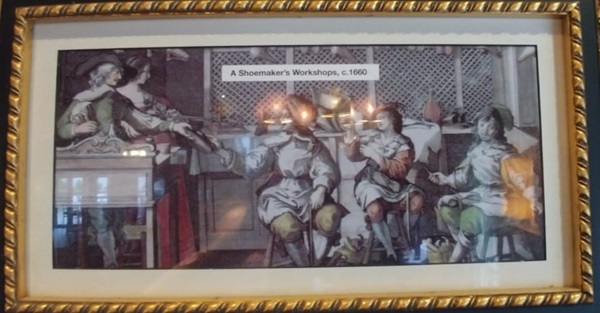
An illustration of Welsh House, c1835, when it was the office of the Northampton Herald.
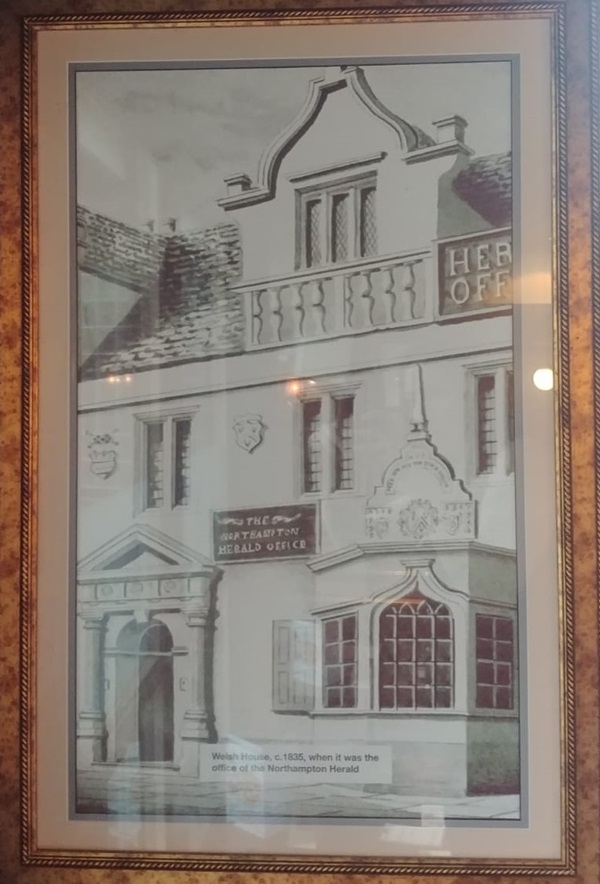
A photograph of Abington Street, 1906 and Bridge Street, c1915.
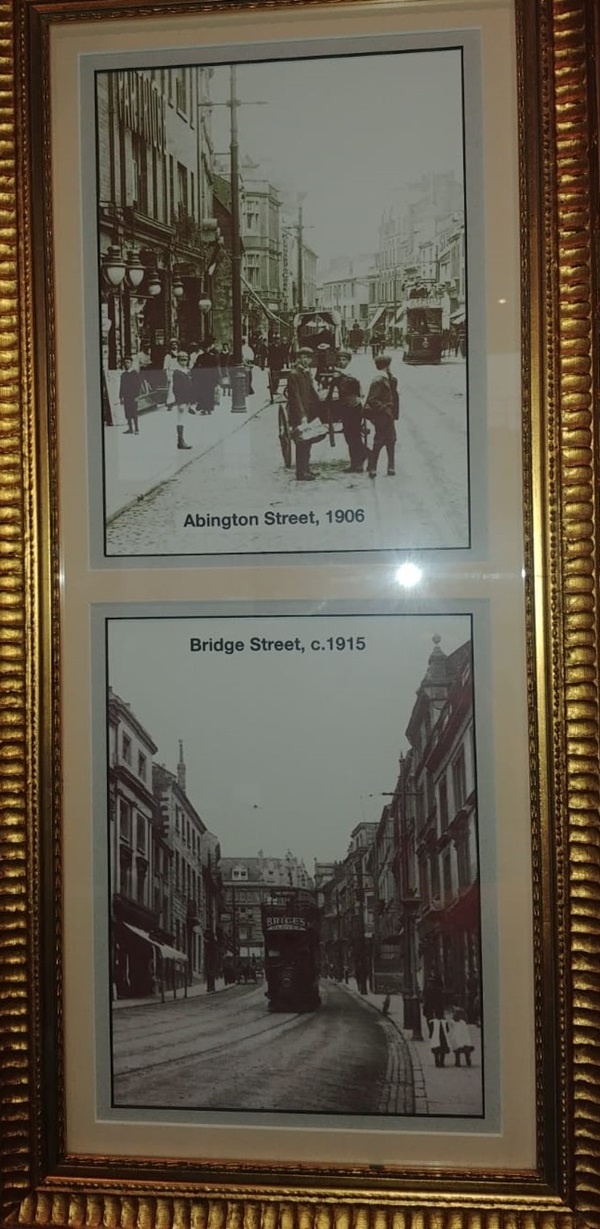
A photograph of King George V and Queen Mary in Market Square, September 23 1913.
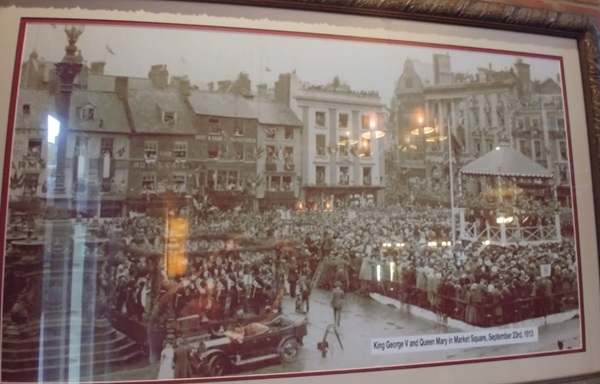
A photograph of Muscutt’s Dining Rooms, Bridge Street, c1910.
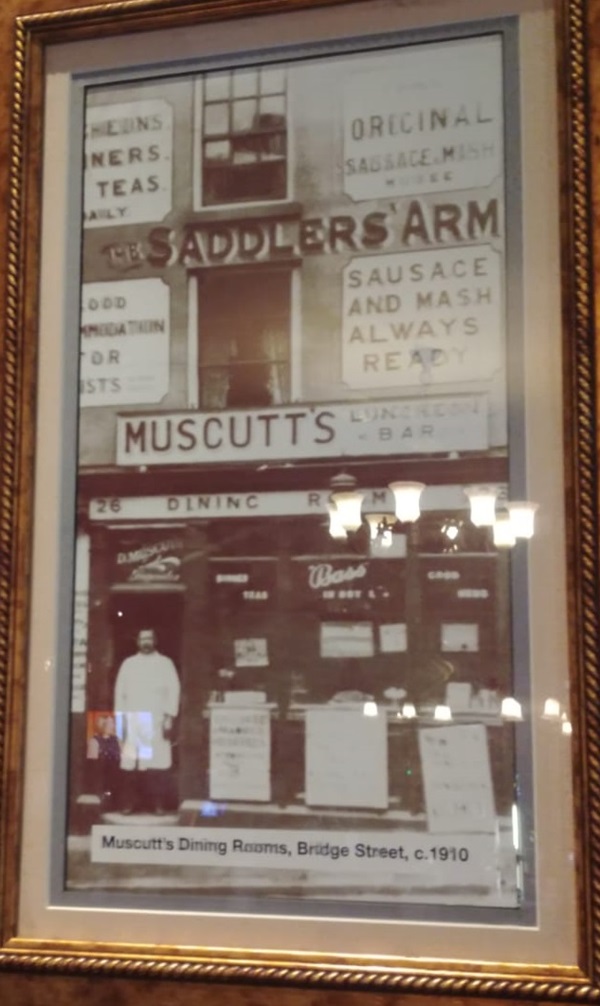
External photograph of the building – main entrance.
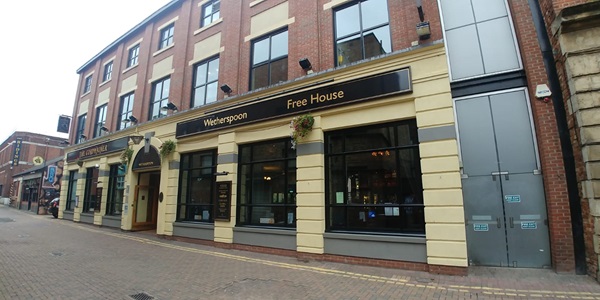
If you have information on the history of this pub, then we’d like you to share it with us. Please e-mail all information to: pubhistories@jdwetherspoon.co.uk